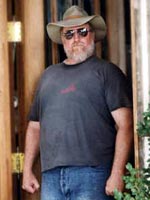John Munch - Interview"Grape Expectations" about the Central Coast
Gayot.com: Central Coast is such an ambiguous term for a wine region. What exactly defines the Central Coast? John Munch: Central Coast is an ambiguous term and not terribly useful to wine consumers, because the area encompassed is so large and diversified in terms of climate, soils, etc. — in other words, "terroir" — the consumer does not gain any clear sense of what to expect from a wine labeled "Central Coast." In general, however, "Central Coast" does connote a certain quality or that the wines are from coastal grapes. G: What originally drew you to the region? G: You've been in the area since before most Central Coast wineries opened their doors. How have you seen the region's wine industry change? JM: Much has changed. The area has evolved from a relatively small viticultural presence to many thousands of acres of grapes. But more importantly, a focus on quality grapes (i.e., the right clones and root stock matched to vineyard sites) has taken over from what, in the past, was simple farming of commodity grapes. G: A recent statistic reported that between 1993 and 1997 the Central Coast wineries in the area around Paso Robles more than doubled. Why is the region growing so fast? JM: When I first made wine in 1980, there were only six or seven wineries in
the area. A couple of years ago, that total had grown to about 30 wineries.
I think that the total count will approach 100 wineries by the end of 2001.
I believe a major factor for growth has been increased awareness of grape
quality potential, tied to relatively inexpensive land. This favorable
combination has attracted the big wineries such as Fetzer, J. Lohr, Robert
Mondavi etc., large wineries who previously bought grapes from the area,
but who have now planted thousands of acres and built large wineries here. G: Is it growing too fast? JM: Yes, the area is growing too quickly, but that is to be expected when an area's extraordinary potential is finally recognized. G: In addition to several large, well-established wineries in the region such as Mirassou, Au Bon Climat and Chalone, why is it that so many tiny mom-and-pop operations seem to be trying to compete in the Central Coast industry? JM: The area is truly spectacular and remains largely unspoiled. So, yes, many of the wineries established over the past several years are mom-and-pop operations, or more correctly, "family" operations. These are folks who, in most cases, visited the area, fell in love with the hills and wines and chucked in the urban or city life for the trials of planting vineyards and making wine. Not terribly rational, but probably a very good choice nonetheless. G: What needs to happen for the region to be held in equally high regard as California's most popular grape-growing centers? JM: Within the wine industry, there is already a sense that the region stands, at least potentially, with the best that the New World has to offer. There is also a strong sense that specific sites within the region (the unique limestone soils, for example) produce grapes with unmistakable character unique to very specific vineyards. This type of site specificity characterizes the very best wine areas of the world, so I think that the high regard has already arrived. Fame has not yet, however, been spread to the degree where the general wine consumer recognizes "Paso Robles" or "Edna Valley" or "Foxen" as a household word. But those consumers in the know are already collecting wines in a big way. G: Do you think the Central Coast can, and would want to, ever become a tourist destination on the scale of Napa? JM: Yes and no. "Central Coast" is too amorphous and too large. As a tourist
destination wine areas have to have better definition, I think Napa is
a nicely focused area where, if you stand on a high hillside on a clear
day, you can almost take in the whole appellation. The Paso Robles appellation,
(a very small part of the Central Coast), is quite a bit larger than the
Napa appellation but also much more diversified with arguably a greater
range of grape growing conditions, "terroir" and hence a greater range
of wine types. This fact holds true, I believe, in Santa Barbara and south,
as well as Monterey County and north of here. So my feeling is that we
will see evolution more along the lines of Sonoma County with its vast
array of wine areas, rather than the contained Napa experience. Hopefully,
this means that we will never have to experience the congestion of Napa! John Munch is also winemaker of Chateau Gayot's Cuvée des Voleurs.
|














